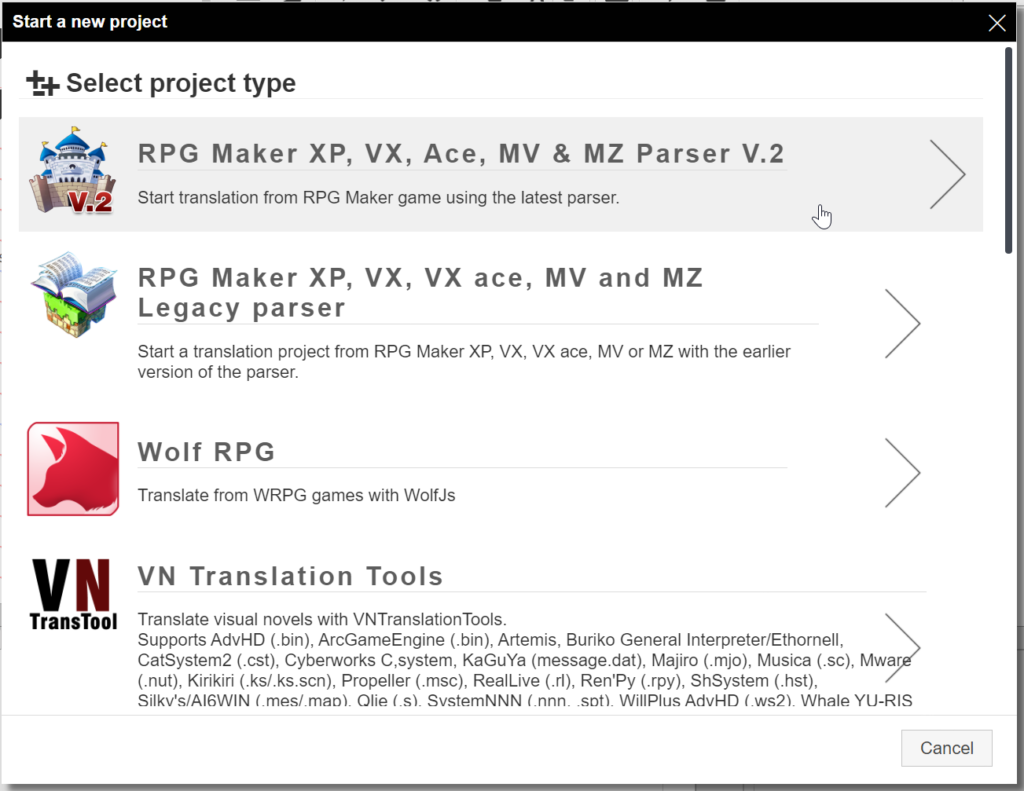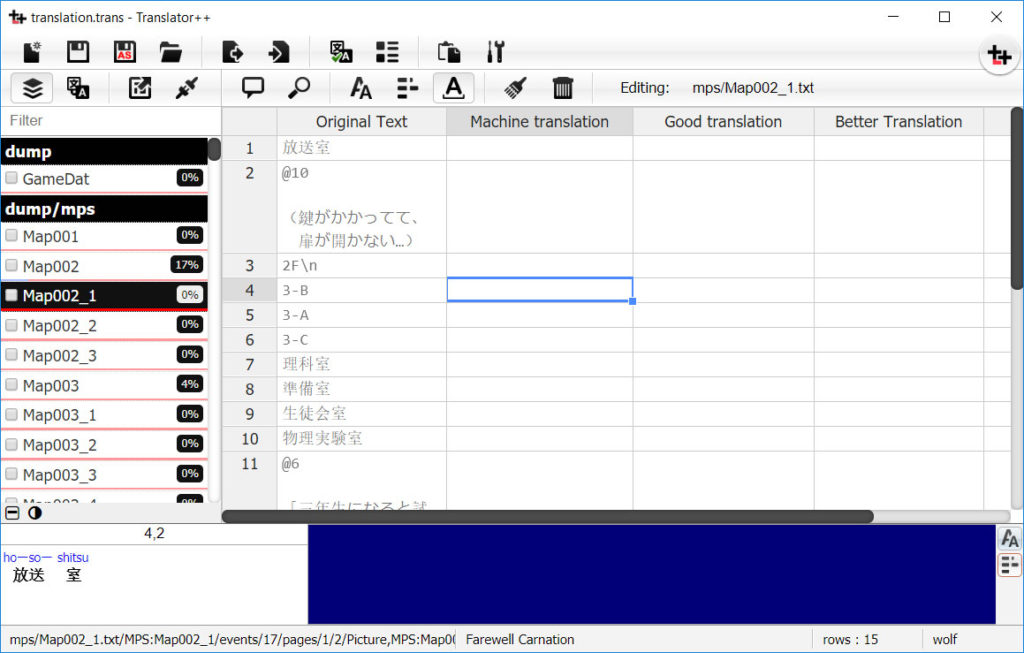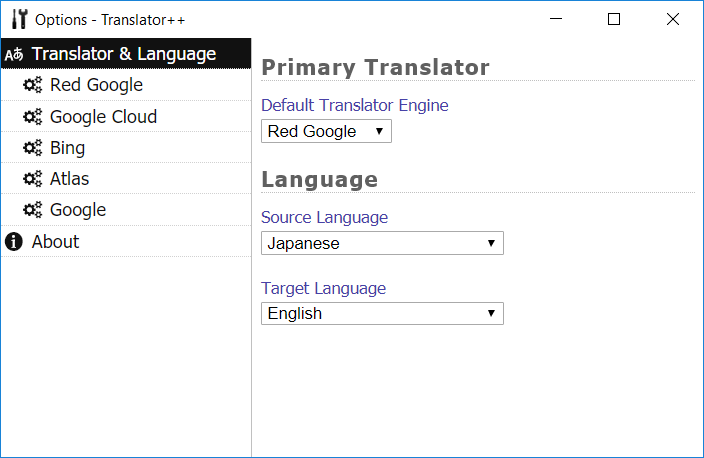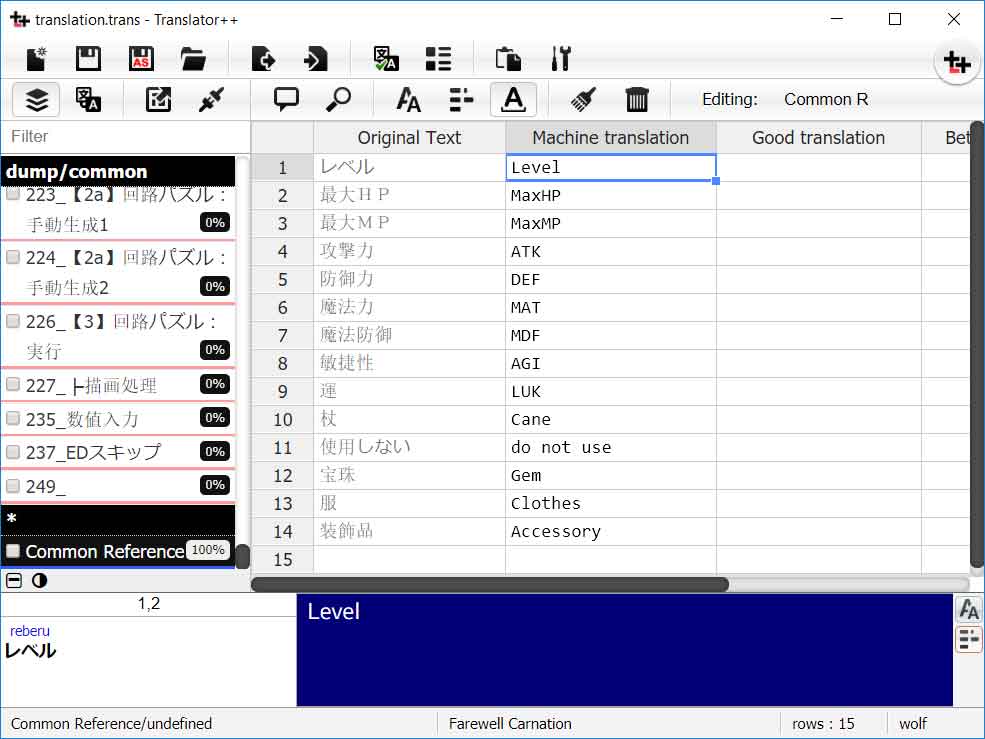Working with Translator++ explained with simple 5 steps.
Step 1
Start a new Project
The first step is to start a new translation project.
In the Start a new Project dialog, select the game engine you want to work on. Translator++ supports dozens of game engines at the time this guide was written.

Then follow the wizard available for each game engine.
Then wait for Translator++ to finish creating a new project for you. Click the Close button when finished.

After project creation success, all of your translatable game texts will be available on the first column of the grid as “Original Text”

Warning
Please check whether your translation is exportable by immediately exporting or injecting your project before doing anything else (see step 5 for how to export your project) .
You don’t want to waste your precious time by after hours of translating it turns out that Translator++ can not export your game.
Step 2
Preparing a comfortable workspace
Now after your translatable text is ready. You can prepare Translator++ to suit your needs. This is going to be a long journey of translation works for you after all.
A. Set the languages
Set language in the options menu.


B. Define commonly used word
At the very bottom of the left panel you can find “Common Reference”. Use this grid to translate words or phrases that regularly appear in your game, such as names, places, stats etc.
This feature will help you create consistent translation.

C. Remove untranslatable texts (optional)
While Translator++ try it’s best to retrieve all translatable text, some of those text are probably bad for translation. For example: scripts related to functions, class names, or files. Translating this thing will potentially break your game.
You can use context tool to mark/remove those texts.

D. Generate machine translator as a supplementary guidance

Step 3
Translating
Now, all is set, you can start translating your game.
Step 4
Proofreading
Every quality translation need to be checked.
- Check your spelling and grammar
- Check for script / mistype of scripts and command. Missing or extra slashes, back slashes, square bracket, spaces, etc can break your game.
Step 5
Creating game patch
Now, after translation is finished. You can test your game by creating game patch.

